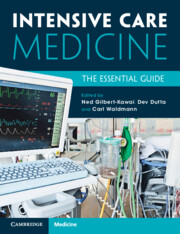Book contents
- Intensive Care Medicine
- Intensive Care Medicine
- Copyright page
- Dedication
- Dedication
- Epigraph
- Contents
- Contributors
- Preface
- Foreword
- Abbreviations
- Section 1 Resuscitation and Management of the Acutely Ill Patient
- Section 2 Diagnosis, Assessment, Investigation, Monitoring and Data Interpretation
- Domain 3 Disease Management: Recognition, Causes and Management
- Section 4 Therapeutic Interventions and Organ Support
- Domain 5 Practical Procedures
- Section 6 Perioperative Care
- Section 7 Comfort and Recovery
- Section 8 End-of-Life Care
- Section 9 Paediatric Care
- Introduction
- Differences
- Clinical Assessment
- Introduction
- Scoring Systems and Quality Metrics in PICU
- Paediatric Intensive Care Transport Services
- Changing Patterns of PICU
- Relevance to the Intensivist
- How Widespread Is Child Abuse?
- Types of Abuse
- The Safeguarding Process – Roles, Responsibilities and Processes
- Respiratory Anatomy and Physiology in Children
- Upper Airway Obstruction
- Intubating the Child with Upper Airway Obstruction
- Paediatric Acute Respiratory Distress Syndrome
- Diseases of the Lower Airway
- High-Flow Nasal Cannulae
- Continuous Positive Airway Pressure
- Mechanical Ventilation
- High-Frequency Oscillatory Ventilation
- Extracorporeal Membrane Oxygenation
- Definition and Recognition of Sepsis
- Patterns of Sepsis Presentation
- Haemodynamics of Paediatric Septic Shock
- Protocolised Management of Sepsis
- Current Controversies
- Outcomes in Sepsis and Septic Shock
- Introduction
- Status Epilepticus
- Coma
- Neurosurgical Emergencies
- Introduction
- Initial Management
- Sudden Unexpected Death in Infancy and Sudden Infant Death Syndrome
- Introduction
- Presentation in Infancy
- Diagnosis and Management of Infants with Suspected Congenital Heart Disease
- Norwood Stage 1, Glenn or Fontan
- Acute Presentations
- Introduction
- The Primary Survey
- Head Injury
- Cervical Spine Injury
- Introduction
- Acute Liver Failure
- Inborn Errors of Metabolism
- Diabetic Ketoacidosis
- Introduction
- Analgesic Agents
- Sedative Agents
- 9.1 Assessment and Management of the Sick Child
- 9.2 Organisation of Paediatric Intensive Care and Paediatric Intensive Care Transport Services in the UK
- 9.3 Safeguarding and Non-accidental Injury
- 9.4 Respiratory Failure
- 9.5 Paediatric Sepsis
- 9.6 Acute Neurological Disorders
- 9.7 The Collapsed Infant
- 9.8 Congenital Heart Disease
- 9.9 Trauma
- 9.10 Acute Liver Failure, Inborn Errors of Metabolism and Diabetic Ketoacidosis
- 9.11 Analgesia and Sedation in the Paediatric Intensive Care Unit
- Section 10 Transport
- Section 11 Professionalism, Patient Safety, Governance and Health Systems Management
- Index
- References
9.2 - Organisation of Paediatric Intensive Care and Paediatric Intensive Care Transport Services in the UK
from Section 9 - Paediatric Care
Published online by Cambridge University Press: 27 July 2023
- Intensive Care Medicine
- Intensive Care Medicine
- Copyright page
- Dedication
- Dedication
- Epigraph
- Contents
- Contributors
- Preface
- Foreword
- Abbreviations
- Section 1 Resuscitation and Management of the Acutely Ill Patient
- Section 2 Diagnosis, Assessment, Investigation, Monitoring and Data Interpretation
- Domain 3 Disease Management: Recognition, Causes and Management
- Section 4 Therapeutic Interventions and Organ Support
- Domain 5 Practical Procedures
- Section 6 Perioperative Care
- Section 7 Comfort and Recovery
- Section 8 End-of-Life Care
- Section 9 Paediatric Care
- Introduction
- Differences
- Clinical Assessment
- Introduction
- Scoring Systems and Quality Metrics in PICU
- Paediatric Intensive Care Transport Services
- Changing Patterns of PICU
- Relevance to the Intensivist
- How Widespread Is Child Abuse?
- Types of Abuse
- The Safeguarding Process – Roles, Responsibilities and Processes
- Respiratory Anatomy and Physiology in Children
- Upper Airway Obstruction
- Intubating the Child with Upper Airway Obstruction
- Paediatric Acute Respiratory Distress Syndrome
- Diseases of the Lower Airway
- High-Flow Nasal Cannulae
- Continuous Positive Airway Pressure
- Mechanical Ventilation
- High-Frequency Oscillatory Ventilation
- Extracorporeal Membrane Oxygenation
- Definition and Recognition of Sepsis
- Patterns of Sepsis Presentation
- Haemodynamics of Paediatric Septic Shock
- Protocolised Management of Sepsis
- Current Controversies
- Outcomes in Sepsis and Septic Shock
- Introduction
- Status Epilepticus
- Coma
- Neurosurgical Emergencies
- Introduction
- Initial Management
- Sudden Unexpected Death in Infancy and Sudden Infant Death Syndrome
- Introduction
- Presentation in Infancy
- Diagnosis and Management of Infants with Suspected Congenital Heart Disease
- Norwood Stage 1, Glenn or Fontan
- Acute Presentations
- Introduction
- The Primary Survey
- Head Injury
- Cervical Spine Injury
- Introduction
- Acute Liver Failure
- Inborn Errors of Metabolism
- Diabetic Ketoacidosis
- Introduction
- Analgesic Agents
- Sedative Agents
- 9.1 Assessment and Management of the Sick Child
- 9.2 Organisation of Paediatric Intensive Care and Paediatric Intensive Care Transport Services in the UK
- 9.3 Safeguarding and Non-accidental Injury
- 9.4 Respiratory Failure
- 9.5 Paediatric Sepsis
- 9.6 Acute Neurological Disorders
- 9.7 The Collapsed Infant
- 9.8 Congenital Heart Disease
- 9.9 Trauma
- 9.10 Acute Liver Failure, Inborn Errors of Metabolism and Diabetic Ketoacidosis
- 9.11 Analgesia and Sedation in the Paediatric Intensive Care Unit
- Section 10 Transport
- Section 11 Professionalism, Patient Safety, Governance and Health Systems Management
- Index
- References
Summary
Key Learning Points
1. In the UK, centralisation of services in the paediatric intensive care unit (PICU) has saved lives.
2. The development of paediatric intensive care transport services has accompanied the centralisation of paediatric intensive care.
3. Paediatric critical illness scoring systems (e.g. paediatric index of mortality (PIM) and paediatric risk of mortality (PRISM)) enable comparisons between units and across time to be made.
4. Current mortality in the paediatric intensive care unit (PICU) in the UK is around 3 per cent.
5. Nearly 6 in 10 PICU admissions in the UK are for children with life-limiting conditions.
Keywords
- Type
- Chapter
- Information
- Intensive Care MedicineThe Essential Guide, pp. 692 - 694Publisher: Cambridge University PressPrint publication year: 2021

